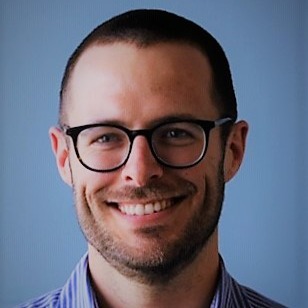Former ASTHO president Dr. Anne Zink, senior clinical fellow at Yale University and practicing emergency medicine physician, shares how PopHIVE, a database of de-identified, population-level health data, draws data from various sources, allowing public health providers to find patterns and make informed decisions; Nicholas Porter, director for environmental health at ASTHO, discusses...
Former ASTHO president Dr. Anne Zink, senior clinical fellow at Yale University and practicing emergency medicine physician, shares how PopHIVE, a database of de-identified, population-level health data, draws data from various sources, allowing public health providers to find patterns and make informed decisions; Nicholas Porter, director for environmental health at ASTHO, discusses the public health threats that exist during floods and hurricanes, and what some states are doing to protect communities; ASTHO’s Wildfire and Wildfire Smoke Guidance and Resources can help jurisdictions strengthen their emergency preparedness; and ASTHO's latest Legislative Alert.
ASTHO Blog: Responding to Environmental Health Threats Following Hurricanes
ASTHO Web Page: Wildfire and Wildfire Smoke Guidance and Resources
ASTHO Legislative Alert: Summary of FY26 House LHHS Appropriations Bill
SUMMER JOHNSON:
This is the award-winning Public Health Review Morning Edition for Thursday, September 4, 2025. I'm Summer Johnson. Now, today's news from the Association of State and Territorial Health Officials.
ANNE ZINK:
There is information in each of these data sets, but I think there's really powerful information when you compare the data sets.
JOHNSON:
That's former ASTHO president Dr. Anne Zink, currently a senior clinical fellow at Yale University. On Wednesday's show, we talked to Zink about her experiences as Alaska's chief medical officer, which led her to develop PopHIVE, which is a database of de-identified, population-level health data. ZinK said the database will help inform both public health providers and local communities about the health trends that impact them today. In part two, Zink explains where the data comes from and why that makes the platform uniquely useful.
ZINK:
So, Epic is the U.S.' largest EMR system, our electronic medical record system, and on top of it sits a project called Cosmos. And Cosmos de-identifies the Epic data, and so we have access to the Cosmos data.
JOHNSON:
PopHIVE doesn't just display public health data. It includes healthcare data and other sources, too.
ZINK:
We also have things like Google search data is in there. We're talking to wearable companies. We're talking to testing companies, so that you can really lay that- that data all on top of each other, and get a better picture of the overall population in your health from these different angles that are telling you slightly different stories.
JOHNSON:
Zink says that by localizing diverse data sources in one place, everyone can draw comparisons and find patterns leading to more solutions and a deeper understanding of public health.
ZINK:
When everyone can look at it and see it, they're going to get new ideas and new perspectives and be able to use it in different ways that I may have totally missed.
JOHNSON:
Zink hopes you will take the time to check it out and give her team some feedback. PopHIVE is online now. Head to the show notes for a link right to it.
September marks National Preparedness Month, and those in public health can take the opportunity to evaluate emergency preparedness plans for natural disasters. ASTHO's Nicholas Porter shares more about the public health threats that exist in hurricanes and floods, and what your agency can do to prepare.
NICHOLAS PORTER:
Exposure to contaminated floodwater can lead to things like infection from pathogens in those- what- in those waters, and/or contact with hazardous chemicals that might be in the floodwaters.
JOHNSON:
Porter says it's important to have a clear strategy for the aftermath of a disaster.
PORTER:
There are two keys to a successful recovery, one being quickly mobilizing significant flexible capital, and two, proactively investing in local capacity and expertise to support post-disaster efforts.
JOHNSON:
One example Porter points to is Texas, which supports post-disaster efforts by tracking exposure data and health concerns.
PORTER:
They use data from their Texas Poison Center Network, as well as their syndromic surveillance system. So, those data allow them to target areas for additional investigations, health advisories, as well as allow them to develop additional outreach and educational materials to help keep communities safe.
JOHNSON:
ASTHO is constantly working to make sure your agency has the resources it needs to strengthen preparedness efforts for all natural disasters. You can read more about preparing for hurricanes and floods in the astho blog article, Responding to Environmental Health Threats Following Hurricanes, and you can also access ASTHO's Wildfire and Wildfire Smoke Guidance and Resources. We'll have links to both in the show notes.
Finally, this morning, ASTHO's government affairs team is working to give you the latest news from D.C., which often changes by the minute. And there's a new Legislative Alert from the team in your inbox about FY26 appropriations that affect public health funding. The Committee on Appropriations' Labor, Health and Human Services, Education, and Related Agencies subcommittee held a markup of the FY26 bill on Tuesday of this week, and a full committee markup is expected early next week. At the moment, the bill rejects the administration's proposal to restructure, eliminate, or consolidate many public health programs. Jeffrey Ekoma will be on this show tomorrow morning to give us a deep dive and ASTHO's analysis.
And if you don't get ASTHO's Legislative Alerts, why aren't you? Sign up so you never miss the latest developments on public health policy. We'll put a link in the show notes.
That'll do it for today. We're back tomorrow morning with more ASTHO news and information. I'm Summer Johnson, you're listening to the award-winning Public Health Review Morning Edition. Have a great day.






